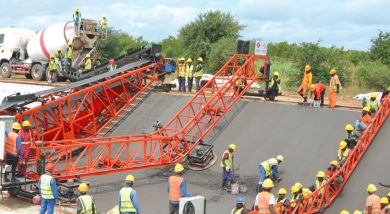Cargo scanners for smart borders
Long before Joseph Yasini became a driver at one of the travel and cargo clearing companies in Blantyre, his view was that such a job was hectic.
He got that impression from the experience of his uncle, who ushered him into the industry, shared on how lengthy and tedious the Malawi process of clearing goods was in his time around 2008.

Yasini recalls his uncle telling him that it could take almost two days to clear trucks at Mwanza Border Post because they had to physically verify every item in the cargo to come up with accurate figures.
“A few could smuggle through some imports because the system was not watertight to the extent that fewer declarations were being made to authorities,” he remembers.
Eventually, his uncle quit the job for a managerial role at another company.
However, this was contrary to World Trade Organisation’s (WTO) requirements under the Trade Facilitation Agreement (TFA), a WTO initiative that facilitates trade simplification and streamlining of customs and border processes.
Malawi, as a TFA signatory country, was supposed to make trade simpler by lowering the costs involved in clearing goods at border posts.
The countries are required to have automated custom windows at various stages of implementation based on the stage of development and type of goods handled.
The Doha round table negotiations, according to www.wto.org also supports the simplification of doing trade. Because of high levels of bureaucracy and unnecessary costs at some border posts, cargo can take up to 30 days to be cleared.
The website also estimates that the average customs transaction involves 20-30 parties, 40 documents and 200 data elements.
“With the lowering of tariffs, the cost of complying with customs formalities exceeds, in many instances, the cost of duty to be paid,” reads the report partly on the website.
At the time we meet, Yasini is on his way to Blantyre from South Africa to deliver goods to his clients. But now his experience at the border is quite different from that of his uncle 11 years ago.
“This time the whole system is automated. It did not take even an hour for the authorities to inspect the 28-tonne articulated truck.
“I am even tempted to leave for Zimbabwe tomorrow because I will off-load this cargo today, which gives me ample time to make another trip,” he says.
The scanner based clearing, which he benefited from and is now operational in three of the country’s clearing points, replaced the ones that importers and other business players blamed for being so laborious. It is part of Malawi Revenue Authority’s (MRA) pilot voluntary certification programme, authorised economic operator (AEO) project.
The project aims at serving compliant tax-payers by giving them priority treatment with the focus of achieving seamless trade, travel and transport while boosting tax revenues.
It benefits all economic operators in the country involved in activities that are covered by customs legislation and the entire supply chain. The container inspection system has improved the efficiency of MRA contributing to national security and collection of customs duties.
It is also billed to be an important catalyst to Malawi’s dream to move from aid to trade.
Unlike in 2008, MRA is no longer manually inspecting cargo trucks. In line with WTO requirements, the tax collector is using X-ray cargo scanners that scrutinise huge volumes of imported freight. Malawi complied with WTO requirements when China handed over cargo scanners to Government to be used by MRA in 2013.
Now transporters passing through Mwanza Border Post, Songwe Station and Lilongwe In-land Examination Centre take less time to clear cargo due to the automated means of inspecting and identifying goods.
A closer look at the equipment gives a clear picture of the investment in technology that determines the type of cargo entering or exiting the country.
This includes information technology systems allowing goods carried in heavy vehicles such as trucks to be declared to customs before passing through the checkpoint to reduce entry of illegal goods.
MRA Commissioner General Tom Gray Malata says the scanners have made the country’s entry points align with international standards.
This, he says, supports the theme for this year’s World Customs Day commemoration, Smart Borders for Seamless Trade, Travel and Transport which highlights customs’ role in supporting the United Nations (UN) 2030 Agenda for Sustainable Development.
“We have operational cargo scanners that are assisting in risk management by countering false declarations and tracking concealed goods.
“This is done without customs officers conducting physical examination which was both cumbersome and time consuming,” Malata explains.
He adds that MRA’s objective is to ensure timely delivery of raw materials to the manufacturing industry and boost transparency, besides offering predictable conditions for trade.
“It also aims at facilitating legitimate business that contributes to economic growth and creating job opportunities,” says Malata.
Principal Secretary in the Ministry of Industry, Trade and Tourism Ken Ndala says the various innovations by MRA have earned Malawi recognition internationally.
“We still fit within the global perspective and that is why the WTO is able to recognise us as a country.
“Government is currently making headway in the implementation of initiatives aimed at reducing the cost of doing business in Malawi,” he says. n





